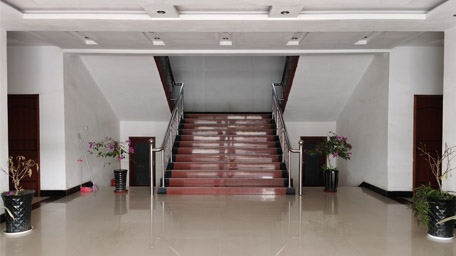- Industrial zone, South of Anping Town, Hengshui, Hebei, China.
- sales@hfpetromesh.com
- +86-18931809706
 Afrikaans
Afrikaans  Albanian
Albanian  Amharic
Amharic  Arabic
Arabic  Armenian
Armenian  Azerbaijani
Azerbaijani  Basque
Basque  Belarusian
Belarusian  Bengali
Bengali  Bosnian
Bosnian  Bulgarian
Bulgarian  Catalan
Catalan  Cebuano
Cebuano  Corsican
Corsican  Croatian
Croatian  Czech
Czech  Danish
Danish  Dutch
Dutch  English
English  Esperanto
Esperanto  Estonian
Estonian  Finnish
Finnish  French
French  Frisian
Frisian  Galician
Galician  Georgian
Georgian  German
German  Greek
Greek  Gujarati
Gujarati  Haitian Creole
Haitian Creole  hausa
hausa  hawaiian
hawaiian  Hebrew
Hebrew  Hindi
Hindi  Miao
Miao  Hungarian
Hungarian  Icelandic
Icelandic  igbo
igbo  Indonesian
Indonesian  irish
irish  Italian
Italian  Japanese
Japanese  Javanese
Javanese  Kannada
Kannada  kazakh
kazakh  Khmer
Khmer  Rwandese
Rwandese  Korean
Korean  Kurdish
Kurdish  Kyrgyz
Kyrgyz  Lao
Lao  Latin
Latin  Latvian
Latvian  Lithuanian
Lithuanian  Luxembourgish
Luxembourgish  Macedonian
Macedonian  Malgashi
Malgashi  Malay
Malay  Malayalam
Malayalam  Maltese
Maltese  Maori
Maori  Marathi
Marathi  Mongolian
Mongolian  Myanmar
Myanmar  Nepali
Nepali  Norwegian
Norwegian  Norwegian
Norwegian  Occitan
Occitan  Pashto
Pashto  Persian
Persian  Polish
Polish  Portuguese
Portuguese  Punjabi
Punjabi  Romanian
Romanian  Russian
Russian  Samoan
Samoan  Scottish Gaelic
Scottish Gaelic  Serbian
Serbian  Sesotho
Sesotho  Shona
Shona  Sindhi
Sindhi  Sinhala
Sinhala  Slovak
Slovak  Slovenian
Slovenian  Somali
Somali  Spanish
Spanish  Sundanese
Sundanese  Swahili
Swahili  Swedish
Swedish  Tagalog
Tagalog  Tajik
Tajik  Tamil
Tamil  Tatar
Tatar  Telugu
Telugu  Thai
Thai  Turkish
Turkish  Turkmen
Turkmen  Ukrainian
Ukrainian  Urdu
Urdu  Uighur
Uighur  Uzbek
Uzbek  Vietnamese
Vietnamese  Welsh
Welsh  Bantu
Bantu  Yiddish
Yiddish  Yoruba
Yoruba  Zulu
Zulu
- Afrikaans
- Albanian
- Amharic
- Arabic
- Armenian
- Azerbaijani
- Basque
- Belarusian
- Bengali
- Bosnian
- Bulgarian
- Catalan
- Cebuano
- Corsican
- Croatian
- Czech
- Danish
- Dutch
- English
- Esperanto
- Estonian
- Finnish
- French
- Frisian
- Galician
- Georgian
- German
- Greek
- Gujarati
- Haitian Creole
- hausa
- hawaiian
- Hebrew
- Hindi
- Miao
- Hungarian
- Icelandic
- igbo
- Indonesian
- irish
- Italian
- Japanese
- Javanese
- Kannada
- kazakh
- Khmer
- Rwandese
- Korean
- Kurdish
- Kyrgyz
- Lao
- Latin
- Latvian
- Lithuanian
- Luxembourgish
- Macedonian
- Malgashi
- Malay
- Malayalam
- Maltese
- Maori
- Marathi
- Mongolian
- Myanmar
- Nepali
- Norwegian
- Norwegian
- Occitan
- Pashto
- Persian
- Polish
- Portuguese
- Punjabi
- Romanian
- Russian
- Samoan
- Scottish Gaelic
- Serbian
- Sesotho
- Shona
- Sindhi
- Sinhala
- Slovak
- Slovenian
- Somali
- Spanish
- Sundanese
- Swahili
- Swedish
- Tagalog
- Tajik
- Tamil
- Tatar
- Telugu
- Thai
- Turkish
- Turkmen
- Ukrainian
- Urdu
- Uighur
- Uzbek
- Vietnamese
- Welsh
- Bantu
- Yiddish
- Yoruba
- Zulu
Optimizing Performance with High-Quality Industrial Shaker Screens for Efficient Filtration
Understanding Industrial Shaker Screens An Essential Tool for Separation Processes
Industrial shaker screens play a crucial role in various industries, including mining, oil and gas, construction, and waste management. These screens are designed to separate materials based on size, facilitating the efficient processing of solid and liquid mixtures. Understanding their functionality and applications can help businesses optimize their operations and improve product quality.
What is an Industrial Shaker Screen?
An industrial shaker screen is a type of separation equipment that uses vibration to distribute materials uniformly across the screening surface. This process enables the separation of particles into different sizes or classifications. The screens are typically made of wire mesh or perforated plates and can be configured in various shapes and sizes to accommodate specific application requirements.
Key Components and Design
The main components of an industrial shaker screen include the chassis, screen surface, and the vibrating mechanism. The chassis provides structural support, while the screen surface is where the separation occurs. The vibrating mechanism, powered by electric or hydraulic drives, induces motion that facilitates the material flow across the screen.
Users can customize shaker screens with different mesh types, openings, and wire diameters depending on the material being processed. For instance, in the mining industry, screens can separate gravel, minerals, and other coarse materials, while finer screens are often used in wastewater treatment to remove small solids and particulates.
Applications and Benefits
industrial shaker screen

Industrial shaker screens are employed in a wide array of applications
1. Mining and Mineral Processing Screens help separate ores from waste rock, increase recovery rates, and improve product purity.
2. Oil and Gas Industry In drilling operations, shaker screens are used to separate drilling fluids from cuttings, which helps maintain efficient drilling performance.
3. Construction and Demolition Screens are used to process materials like asphalt, concrete, and soil, allowing for the recycling of valuable resources and reducing landfill waste.
4. Waste Management Shaker screens play a vital role in sorting and cleaning recyclable materials from waste streams, enhancing the efficiency of recycling processes.
The benefits of using industrial shaker screens include enhanced operational efficiency, reduced labor costs, and improved material quality. By effectively separating materials, businesses can minimize contamination and maximize resource utilization.
Conclusion
Industrial shaker screens are indispensable in numerous industries, providing essential separation capabilities that enhance productivity and sustainability. As technology advances, the design and efficiency of these screens continue to improve, offering new opportunities for businesses to optimize their processes. Understanding and incorporating proper shaker screen technology can lead to significant operational benefits, driving growth and innovation in an increasingly competitive market.
-
Welded Steel Bar Grating: The Rugged Industrial Flooring Solution Built for Load and LongevityNewsJun.24,2025
-
Steel Walkway Grating: Reliable, Resilient, and Built for Every StepNewsJun.24,2025
-
Shale Shaker Screen for Sale: Optimize Drilling Efficiency with Precision Screening PowerNewsJun.24,2025
-
Shaker Screen for Sale: Elevate Your Drilling Efficiency with Durable Separation SolutionsNewsJun.24,2025
-
Press Locked Steel Grating: Industrial Strength with Precision Fit for Heavy-Duty ApplicationsNewsJun.24,2025
-
Perimeter Safety Netting: The Critical Safety Upgrade for Every HelipadNewsJun.24,2025